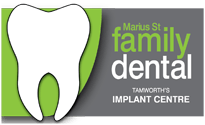Conventional Braces
Traditional braces are where brackets are glued to the teeth and a wire is used to control teeth movement.

Within this design, you have several options:
- Full upper and lower braces: gives you the best result as we get the top and bottom relationship right
- Just upper braces: designed just to straighten the top teeth without changing the bottom teeth
- Sectional braces: just straighten the upper front teeth when they are only slightly crooked. This doesn’t change the bottom teeth or the back teeth. It is generally faster and cheaper, and good if you are about to get some work done on the front teeth and you want to get them a bit straighter first. However, you must accept that it is a compromise.
Getting Braces On
Getting the braces on: Several appointments may be necessary to fit all the braces and/or appliances to your teeth. You may find that for the first couple of days your teeth may feel tender to bite and your jaw aches; this is because of the pressure of the braces, you may need to take some pain medication. You may find that your braces may also rub against the inside of your lips or cheeks. If this is the case, use the wax which your dentist will have supplied.
During Treatment
We then like to see you every six to eight weeks to track progress and make adjustments to stay on course. This may involve having the bands and wires changed, tightened or indeed elastics added. If you have had your brace tightened, you may fell a little discomfort later in the day which is a normal.
How long does the treatment take?
It usually takes between 18-24 months but will vary according to how complex the case is. We will provide you with a time frame at the beginning of the treatment; however breakages of any part of the braces will add time to the treatment.
Looking after your Braces
You will be able to eat most of the foods you were eating before, but more care will need to be taken not to damage your braces. There are some foods that have to be cut out of your diet whilst you are wearing the appliance.
Toffees.
Chewy sweets, like Mars bars or starburst for example.
Hard foods, like crusty bread and apples.
It is very important that your oral hygiene is excellent as cleaning your teeth is much more difficult with a brace in place. Brushing your teeth after every snack and meal throughout the day will reduce the risk of decay and gum disease. In addition, take longer brushing your teeth in the morning and at night. Ask your dentist which is the best type of tooth brush for cleaning braces. If you do not look after your teeth during your treatment they can become permanently stained.
After your treatment is complete
Your braces will be removed and your teeth cleaned and polished to remove any remaining cement. Your treatment is not over as the teeth need to be held in position while the surrounding gum and bone settles. This period is called retention and the appliance that holds the teeth are called retainers, which are either fixed or removable. Depending on the type of retainers, Impressions may to be taken in order for the retainers to be made at the dental laboratory. You will then return a week later to collect your retainers. Retainers are for life. You must wear them as long as you want your teeth to be straight.
